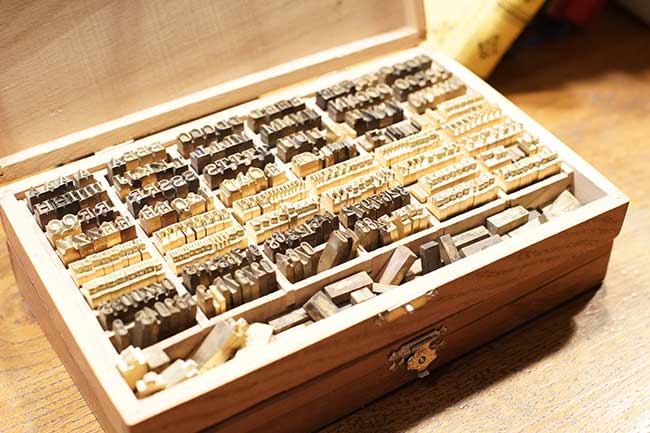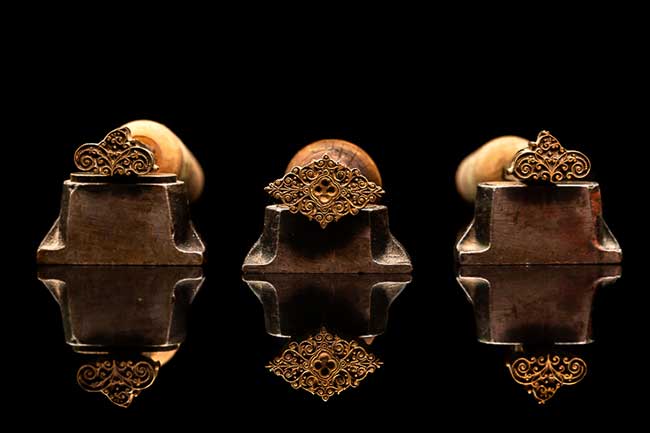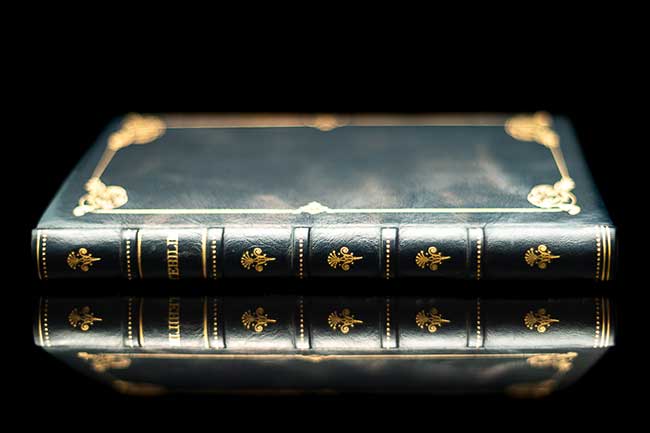The art of gilding
Traditional hot foil stamping is a technique that has been used for centuries for decorating, titling and marking bindings and slipcases. The gold used is packaged in sheets so thin, barely a few microns, that you can see through it transparently. The gold leaves are preserved in tissue paper notebooks of different sizes. The gilder uses special tools to handle and cut these extremely precious and fragile leaves: the gold cushion which serves as a support for the cutting operations, the gold knife to cut the leaves and the gold bed, a small tool used to precisely move and apply the gold to the chosen places and create beautiful patterns.
The principle of hot gilding is simple: the leather to be gilded is covered with a primer. This primer will act as a hot-reactivable glue. The area to be gilded is then covered with gold leaf. The gilding tool that will be used next differs depending on the desired objective:
- a punch engraved with a unique pattern (a scroll of sefer Torah, a magen David for example) called a fleuron
- a wheel that will allow the repetition of a pattern
- a gilding palette, generally made of horsehair, makes it possible to manipulate the gold leaf
- bronze fonts (French or Hebrew)
The metal tools are heated to over 100 degrees and then used to press the gold onto the area to be gilded. It is then that the primer previously deposited on the leather will retain the gold in the precise area of the pattern. Loose gold will be cleaned with a square of flannel.
A distinction is usually made between unmarked gilding and traced gilding: non-marked gilding is carried out in a single operation, on leather that has been covered with a primer. The gilding obtained only makes a small hollow in the leather. As for the traced gilding, it is carried out in several stages: an imprint is made by successive pressures with the gradually heated gilding tool on slightly moistened leather. A very clear and relatively deep imprint is obtained in the leather. The bottom of this imprint is then covered with a gilding primer, applied using a fine brush; it is a meticulous and delicate operation on which the quality of the result depends. After the primer has completely dried, gold leaf is placed on the impression, then the gilder applies his heated tool precisely into the impression, through the gold leaf. The operation can be repeated once or twice until the desired result is obtained. This type of gilding is fairly slow to execute, but it lends itself well to the precise creation of complex decorations.
The gilding tools, or "gilding irons", are engraved by hand in bronze. Maison Pardo has a collection of "gilding irons" which reflect decorative styles over several centuries and also exists on the theme of Judaism: finials, palettes, wheels.








